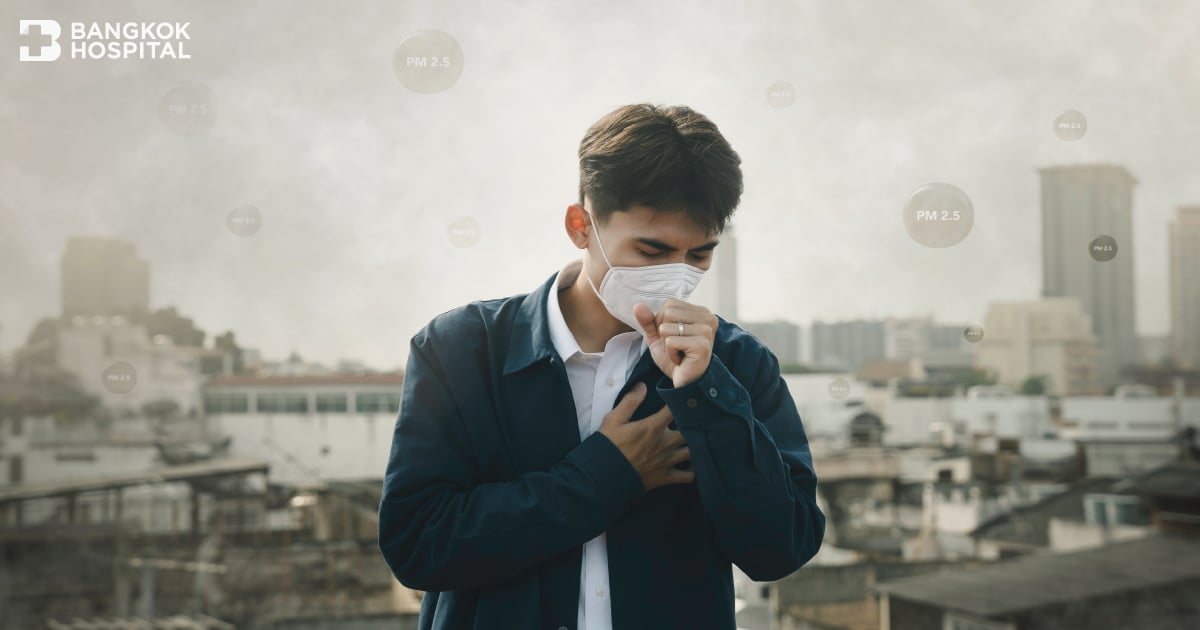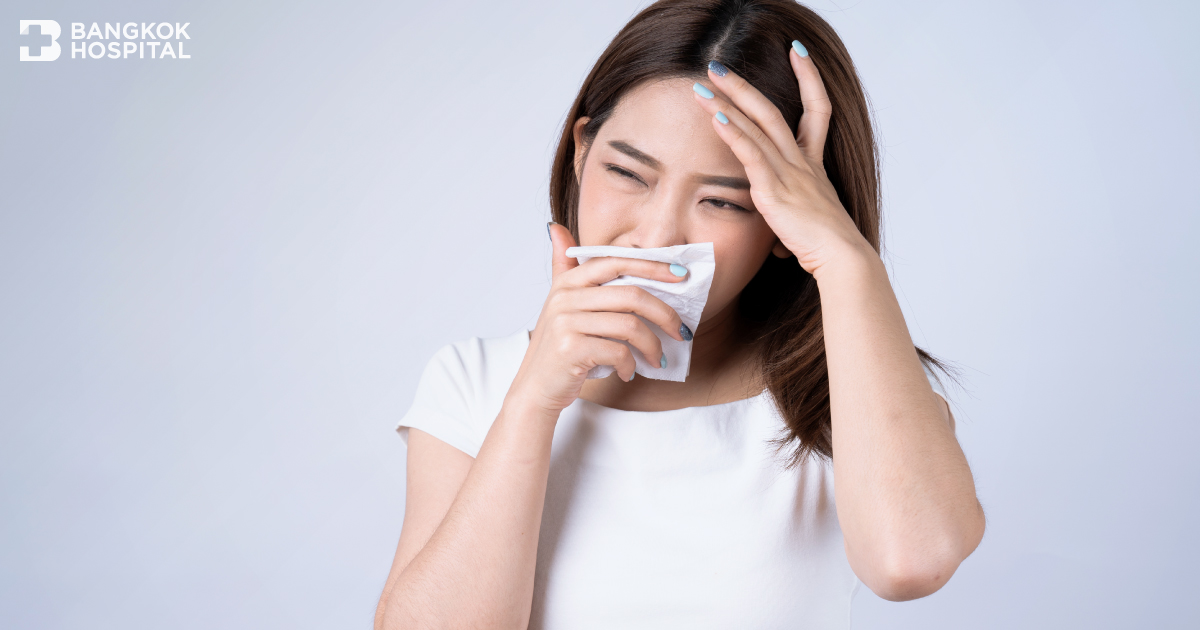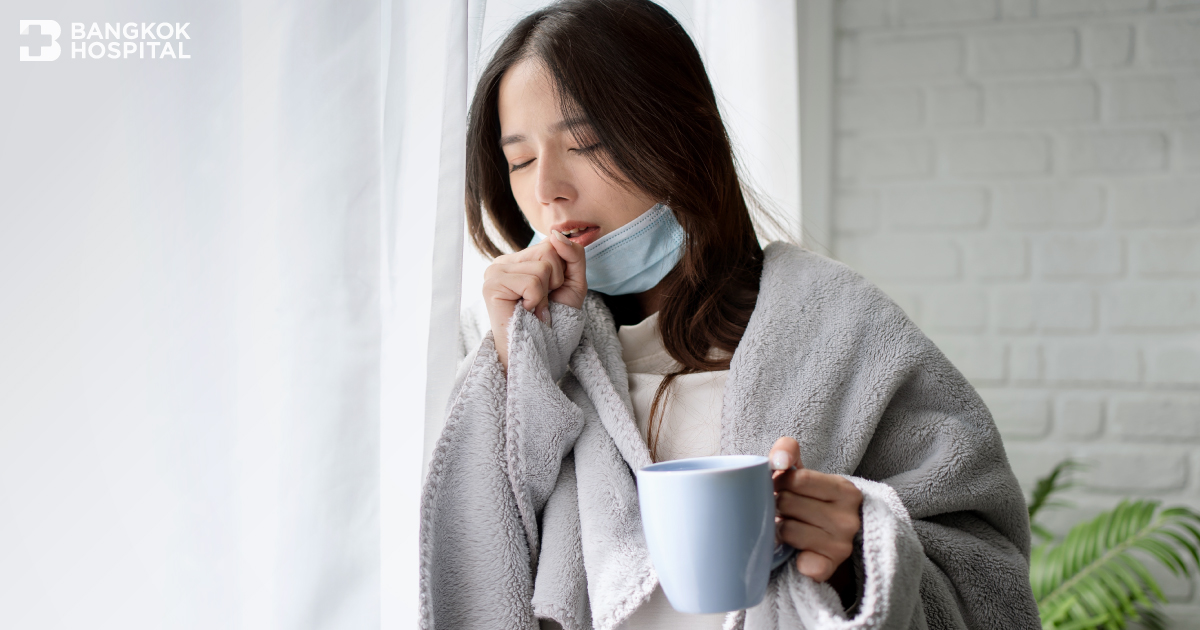Dust PM 2.5 (Particulate Matters) Tiny toxic particles that are increasingly becoming severe and hard to avoid. Once inhaled, they penetrate deeply into the lungs, respiratory tract, and bloodstream, causing skin and eye irritation and increasing the risk of chronic diseases, impacting health more severely than expected.
What is PM 2.5 dust?
PM 2.5 dust or Particulate matter with a diameter of less than 2.5 microns is fine particulate matter smaller than 2.5 microns, approximately 1/25th the diameter of a human hair, making it invisible to the naked eye. The more dense it gets, the more it resembles fog or smoke. The worrisome factor is that PM 2.5 can bypass all of the body’s defenses: the skin, nasal hairs, bronchial linings, alveolar cells, and bloodstream, leading to abnormalities in the body.
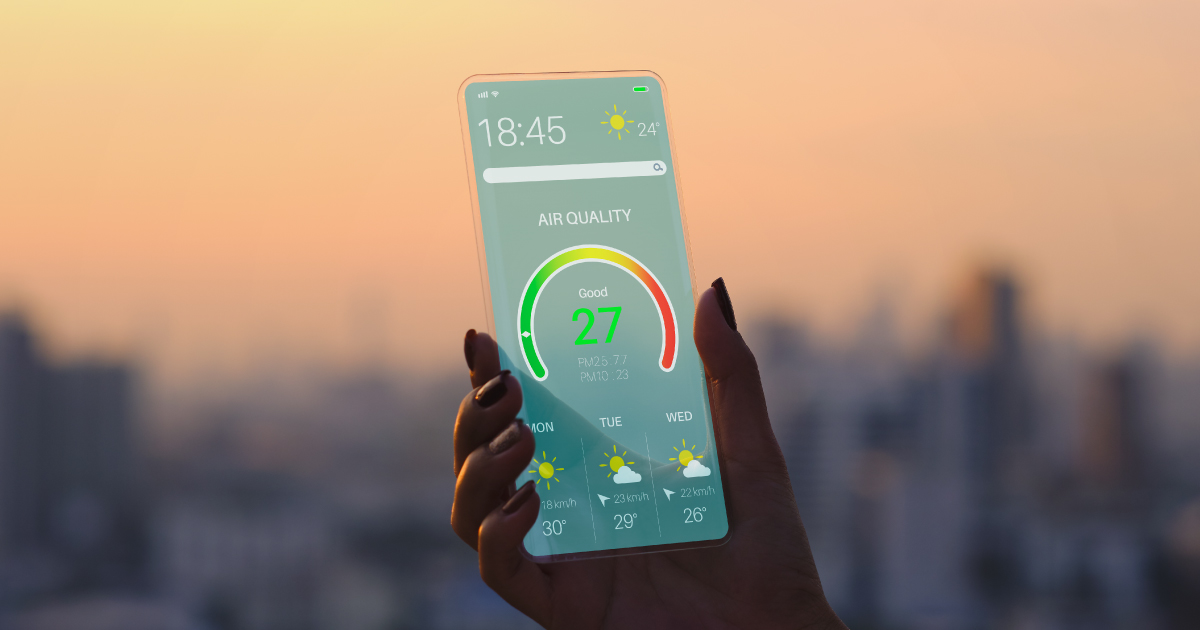
What level of PM 2.5 dust is dangerous?
The PM 2.5 levels that impact health use PM 2.5 levels in the atmosphere, averaging over 24 hours, categorized into 5 levels as follows:
|
PM 2.5 levels (micrograms / cubic meter) |
Level |
Weather condition / Health impact |
|
0 – 25 |
Very good |
Very good weather, normal activities can be conducted. |
|
26 – 37 |
Good |
Good weather, at-risk groups should cautiously perform activities. |
|
38 – 50 |
Moderate |
Moderate weather, avoid outdoor activities. |
|
51 – 90 |
Poor |
Poor weather, no outdoor activities, start impacting health. |
|
91 and above |
Very poor |
Very poor weather, no outdoor activities, impacts health. |

How does PM 2.5 impact health?
- Respiratory system: PM 2.5 dust entering the respiratory system causes inflammation in the upper and lower respiratory tracts, triggering allergies that make the body more sensitive to existing allergens and more susceptible to new ones, causing both acute and chronic inflammation. For those with chronic nasal allergies, asthma from allergies, or chronic skin allergies, allergy vaccines can help reduce symptoms and potential long-term cure.
- Lungs: PM 2.5 dust can penetrate deeply into the innermost layer of the lungs. Prolonged exposure may lead to chronic lung diseases and lung cancer, particularly adenocarcinoma type (Adenocarcinoma) which is related to PM 2.5. Women are more prone than men, and regular smokers who inhale PM 2.5 have twice the risk of lung cancer. It is advisable to quit smoking immediately. Non-smokers diagnosed with lung cancer may be partly affected by air pollution. Thailand ranks among the top for PM 2.5 pollution exposure. Furthermore, genetic testing can help evaluate cancer risks related to PM 2.5 in those with a family history, high-risk individuals, or those needing a risk assessment for cancer.
- Brain: PM 2.5 dust can penetrate through blood vessels, nasal nerve endings, and directly into the brain, causing brain inflammation, injuring brain cells, increasing the risk of dementia faster. Adults are at increased risk of Alzheimer’s disease and Parkinson’s disease. Those with migraines may experience severe headaches requiring immediate medical attention.
- Heart: Excessive exposure to PM 2.5 dust can cause cellular inflammation, affect blood vessel linings, and trigger clot formation, increasing the risk of future vascular occlusions. Individuals with a heart disease risk should monitor their condition and consult a doctor for heart health checks.
- Skin: PM 2.5 dust affects the skin through hair or pores, directly impacting the skin. It disrupts cellular function, triggers inflammation, and causes rashes and itching. Those with allergies or eczema may experience heightened irritation and flare-ups. Prolonged exposure increases the risk of premature skin aging.
- Eyes: PM 2.5 dust stick to eyelids, conjunctiva, or cornea, exacerbating inflammation, damaging the tear film and conjunctival surface, leading to various eye conditions such as dry eyes, burning sensation, foreign body sensation in the eyes, redness, conjunctivitis, itching, excessive tearing, blepharitis, meibomian gland obstruction, corneal inflammation, weakened cornea, and impaired vision.

Symptoms that may be caused by PM 2.5
- Difficulty breathing, nasal irritation
- Coughing, runny nose, sneezing
- Shortness of breath
- Itching, red skin rashes
- Burning eyes, eye irritation
- Red eyes, itchy eyes, watery eyes
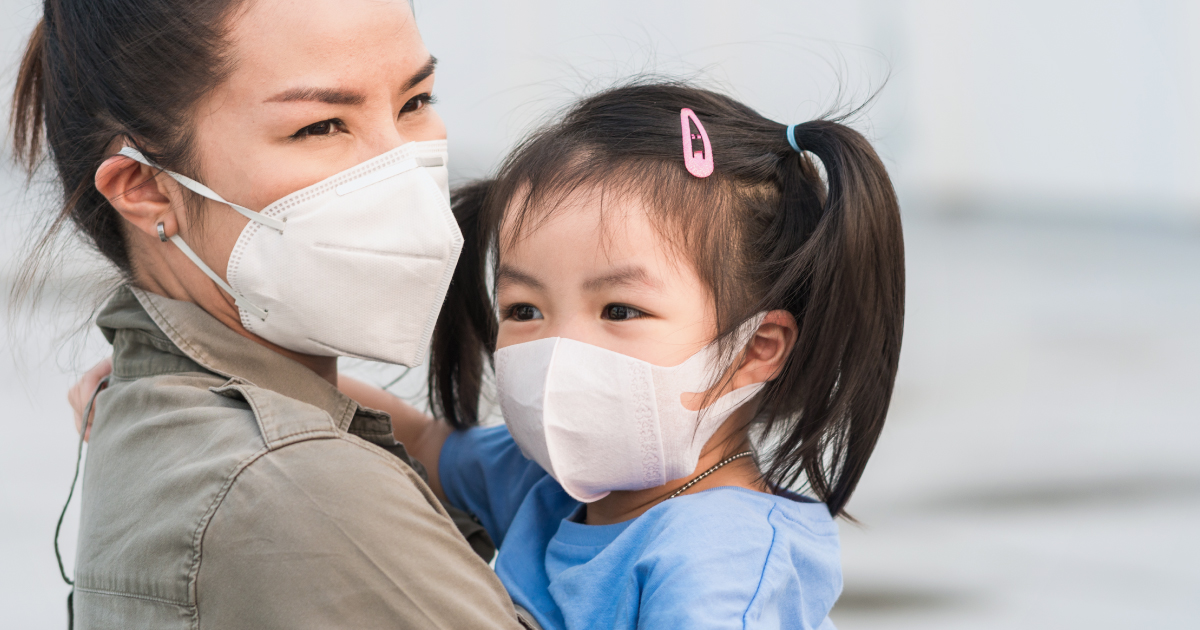
At-risk groups need to beware of PM 2.5
- Children: They have weaker immune systems than adults, allowing PM 2.5 dust to enter the respiratory and blood systems easily. Younger children under 5 years old are more vulnerable. It can cause irritation, burning eyes and nose, coughing, phlegm, sore throat, and difficulty breathing, reducing lung function and increasing respiratory risks. More concerning, PM 2.5 can damage brain cells, leading to delayed development, attention deficit, and low IQ.
- Pregnant women: PM 2.5 exposure causes respiratory issues in pregnant women, especially those with allergies or asthma. The risk of exacerbations is high, increasing the chance of miscarriage. It also delays fetal growth, increases premature birth risks, congenital disabilities, and low birth weight, and can cause frequent illness after birth.
- Elderly: Their bodies deteriorate, making them prone to illnesses and chronic diseases. Inhaling large amounts of PM 2.5 dust can accumulate in blood vessels, increasing the risk of vascular stenosis, paralysis, and lung ailments. Dust accumulation in the brain can damage brain cells, leading to early dementia.
- Patients or those with chronic conditions: Especially those with respiratory system ailments, lung diseases, heart diseases, and brain diseases. Prolonged exposure to large quantities of PM 2.5 can exacerbate these diseases, possibly escalating them to life-threatening stages. Proper care and regular monitoring for abnormalities should be prioritized, and doctor’s appointments should always be kept.
Moreover, those working alongside roads and those exercising outdoors should avoid PM 2.5 on days when levels skyrocket beyond standards, as it can be harmful when inhaled into the respiratory system and alveoli, penetrating the bloodstream and affecting other organs, reducing body oxygen levels, and overburdening the lungs and heart. Stay indoors or in shaded areas, and seek medical attention if symptoms occur.
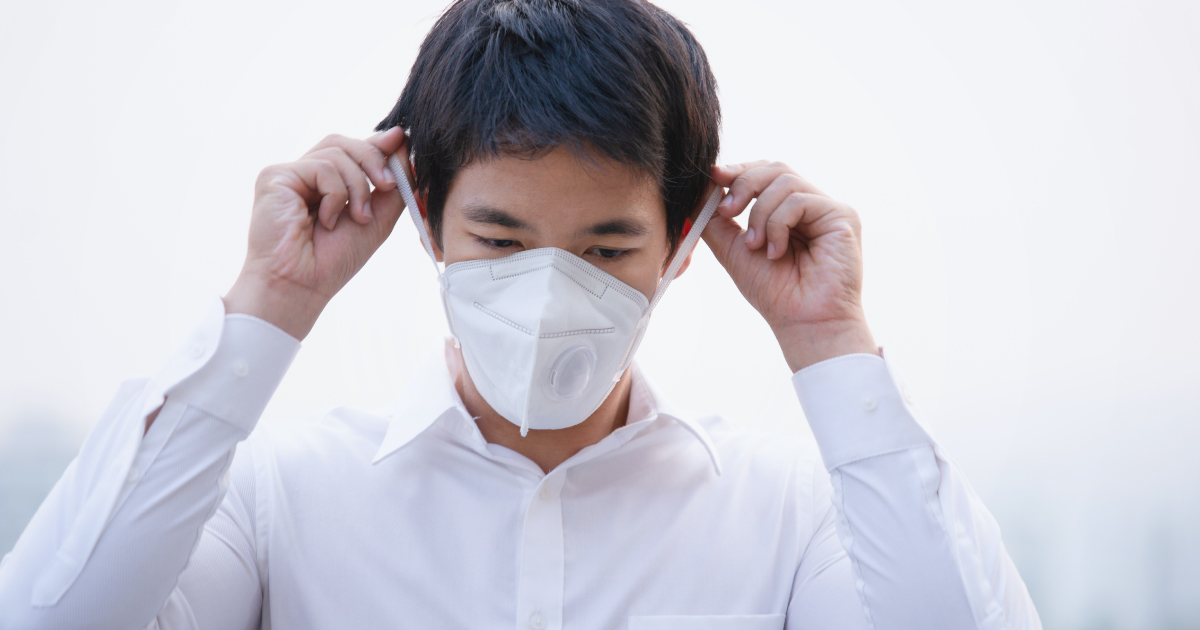
Ways to handle PM 2.5
- Wear an N95 mask when outdoors, as it helps filter out 95% of PM 2.5 and small particles. Especially during high PM 2.5 or high pollution conditions, the N95 mask is the best protection. Choose a mask that fits snugly on your face, covering both the nose and mouth, with a tight strap to prevent dust leakage. It’s important to change masks regularly for optimal performance.
- Avoid outdoor activities when PM 2.5 levels are dangerously high. Do not engage in outdoor activities unnecessarily. Ensure windows are tightly closed, use a high-efficiency air purifier, and if needed to go outdoors, wear an N95 mask and avoid roadside construction areas, which tend to have high pollution levels.
- Limit or avoid outdoor exercise especially when PM 2.5 levels are high. If you wish to exercise, opt for a slow walk instead of jogging to avoid potential harm to the respiratory and lung systems.
- Travel by vehicles that reduce health impacts from PM 2.5, including subways, buses, vans, and ferries, or use private vehicles powered by CNG (Compressed Natural Gas), eco-friendly fuel. It’s recommended to use public transportation more than private vehicles to lessen PM 2.5 emissions.
- Check PM 2.5 levels through apps or websites daily before leaving home to properly manage your health. Apps and platforms like AirVisual, Air4Thai, AQICN (Air Quality Index), Air Matters, and Airveda are suggested.

Amidst living in a world filled with PM 2.5 dust, self-care and constant monitoring for bodily abnormalities are essential. If experiencing chest tightness, difficulty breathing, or clogged respiration, immediate medical attention is necessary.
Hospitals ready to treat health impacts from PM 2.5
General Medical Clinic, Bangkok Hospital is ready to address health effects from PM 2.5 dust, with specialized doctors and multidisciplinary teams providing close care, ensuring patients regain robust health and live life confidently every day.
Doctors specialized in treating effects from PM 2.5
Dr. Chayapon Cheetanom, General Physician, Bangkok Hospital
You can click here to schedule an appointment.

